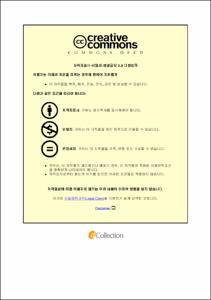한국 제주해협에서 해양 미소 진핵생물의 계절적 동태와 다양성
- Alternative Title
- Seasonal dynamics and diversity of marine microbial eukaryotes in the Jeju Strait, Korea
- Abstract
- Marine protists are ubiquitous and play fundamental roles in microbial food-webs and global biogeochemical cycling. We investigated the diversity and spatiotemporal distribution of marine microbial eukaryotes using 18S rRNA V9 metabarcoding in the Jeju Strait of Korea in March, June, September, and November 2017. A total of 1,424,655 sequences and 2,481 OTUs were obtained from 147 samples. Interestingly, parasitic protist sequences represented over 20% of total 18S rDNA sequences. The relative abundances of parasite sequences were relatively higher in June and November (on average 31.8% and 38.7%, respectively) than in March and September (on average 28.1% and 31.5%, respectively). The largest proportions among the parasite sequences were occupied by Syndiniales groups I and II in all samples. The relative proportions of Syndiniales groups I and II showed a marked different pattern in distribution. While the relative abundances of Syndiniales group I were higher in surface water samples than in deep waters, those of Syndiniales group II tended to greatly increase with depth. Syndiniales group II Clade 10+11 appeared mostly in the mid water layers, whereas Syndiniales group II clade 6 and 7 occurred in the bottom water layers. A co-occurrence analysis revealed strong positive associations between Syndiniales group II and Ciliophora, Syndiniales group II and Dinophyceae in September and strong positive associations between Syndiniales group II clades 6 and 7 and Radiolarian Spumellarida, suggesting a host and parasite relationship. The strong negative relationship also revealed between Syndinials group II and Dinophysae, due to contrasting differences in their appearance depth according to halocline in September. The dominant proportions of parasite sequences in microbial eukaryotes communities indicate that they are one of the important components as well as play potentially important roles in the microbial food webs in the highly dynamic coastal system.
- Issued Date
- 2020
- Awarded Date
- 2020. 2
- Type
- Dissertation
- Publisher
- 부경대학교
- Alternative Author(s)
- Hyojeong Seo
- Affiliation
- 부경대학교 대학원
- Department
- 대학원 해양학과
- Advisor
- 김선주
- Table Of Contents
- I. 서론 1
II. 재료 및 방법 4
1. 현장 조사 및 시료 채집 4
2. DNA 추출 4
3. PCR 및 대량염기서열분석 5
4. 데이터 분석 8
III. 결과 10
1. 연구 해역의 물리 및 엽록소 a 분포 특성 10
2. 미소진핵생물의 군집 구조와 다양성 13
가. 알파 다양성 15
나. 해양 미소 진핵생물 군집 비교 18
다. 기생성 원생생물의 계절 별 출현양상 23
라. 기생성 원생생물 신디니움목의 수괴에 따른 상대적 풍도 27
마. 기생성 원생생물 신디니움목의 수심에 따른 상대적 풍도 31
바. 주요 우점 분류군(AOTU)의 계절별 분포와 출현 빈도 36
사. 주요 우점 분류군(AOTU) 간의 상호 연관성 42
IV. 고찰 45
1. 해양 미소진핵생물의 출현양상 45
2. 기생성 원생생물 신디니움목의 다양성과 출현양상 46
3. 그 외 기생성 원생생물의 다양성과 출현양상 51
4. 제주 해협에서 기생성 원생생물의 생태학적 의의 54
V. 요약 57
VI. 참고문헌 61
VII. 감사의 말 71
- Degree
- Master
- Files in This Item:
-
-
Download
 한국 제주해협에서 해양 미소 진핵생물의 계절적 동태와 다양성.pdf
기타 데이터 / 2.84 MB / Adobe PDF
한국 제주해협에서 해양 미소 진핵생물의 계절적 동태와 다양성.pdf
기타 데이터 / 2.84 MB / Adobe PDF
-
Items in Repository are protected by copyright, with all rights reserved, unless otherwise indicated.